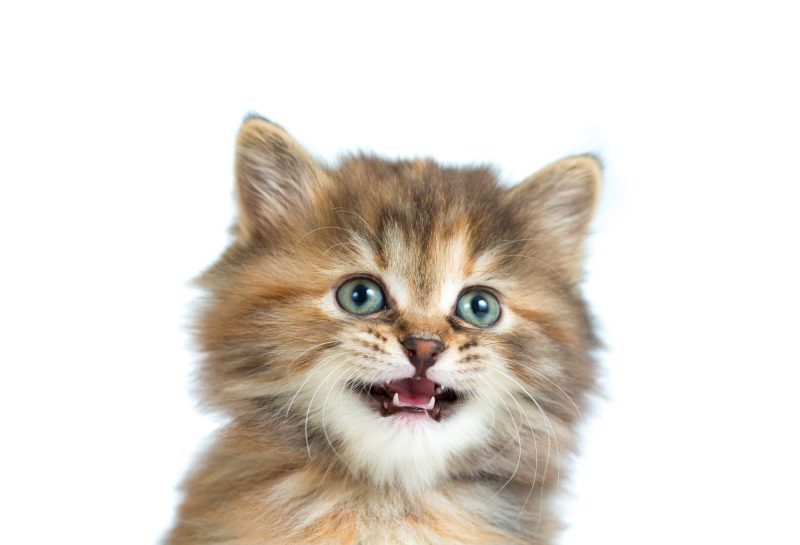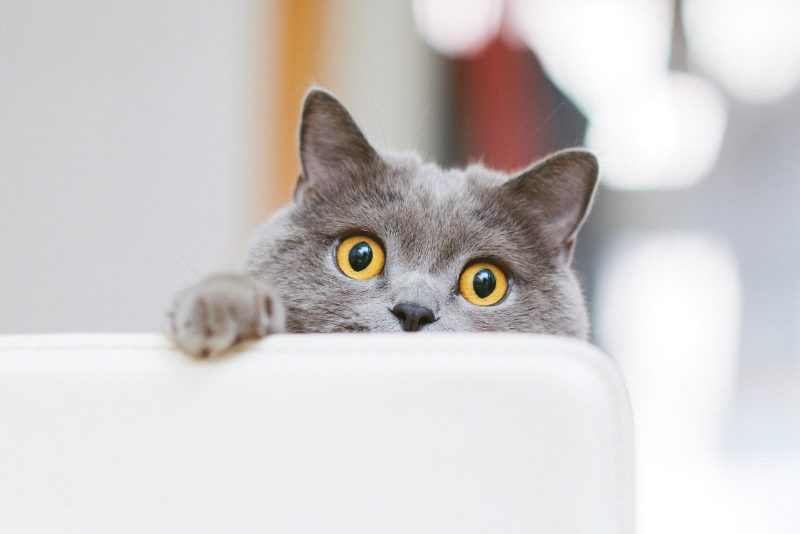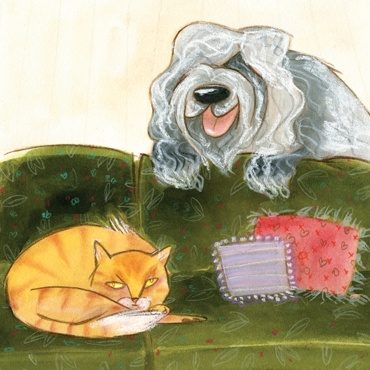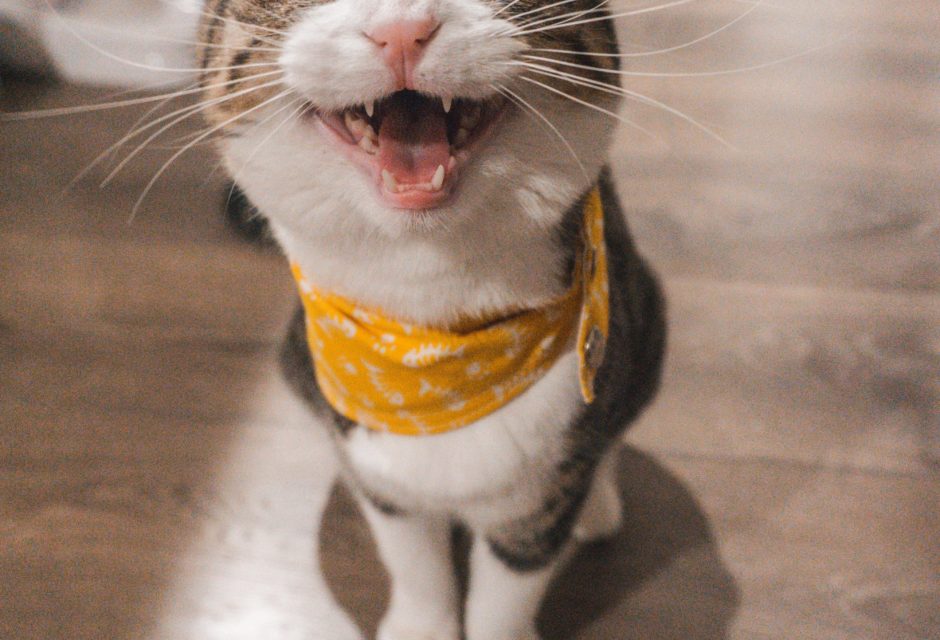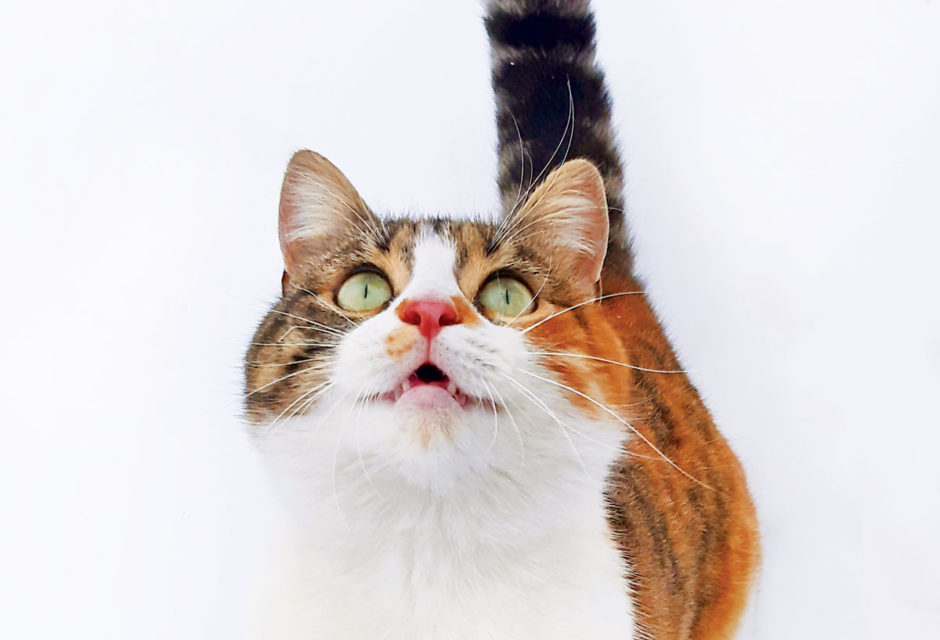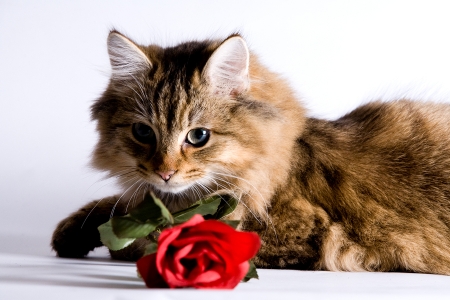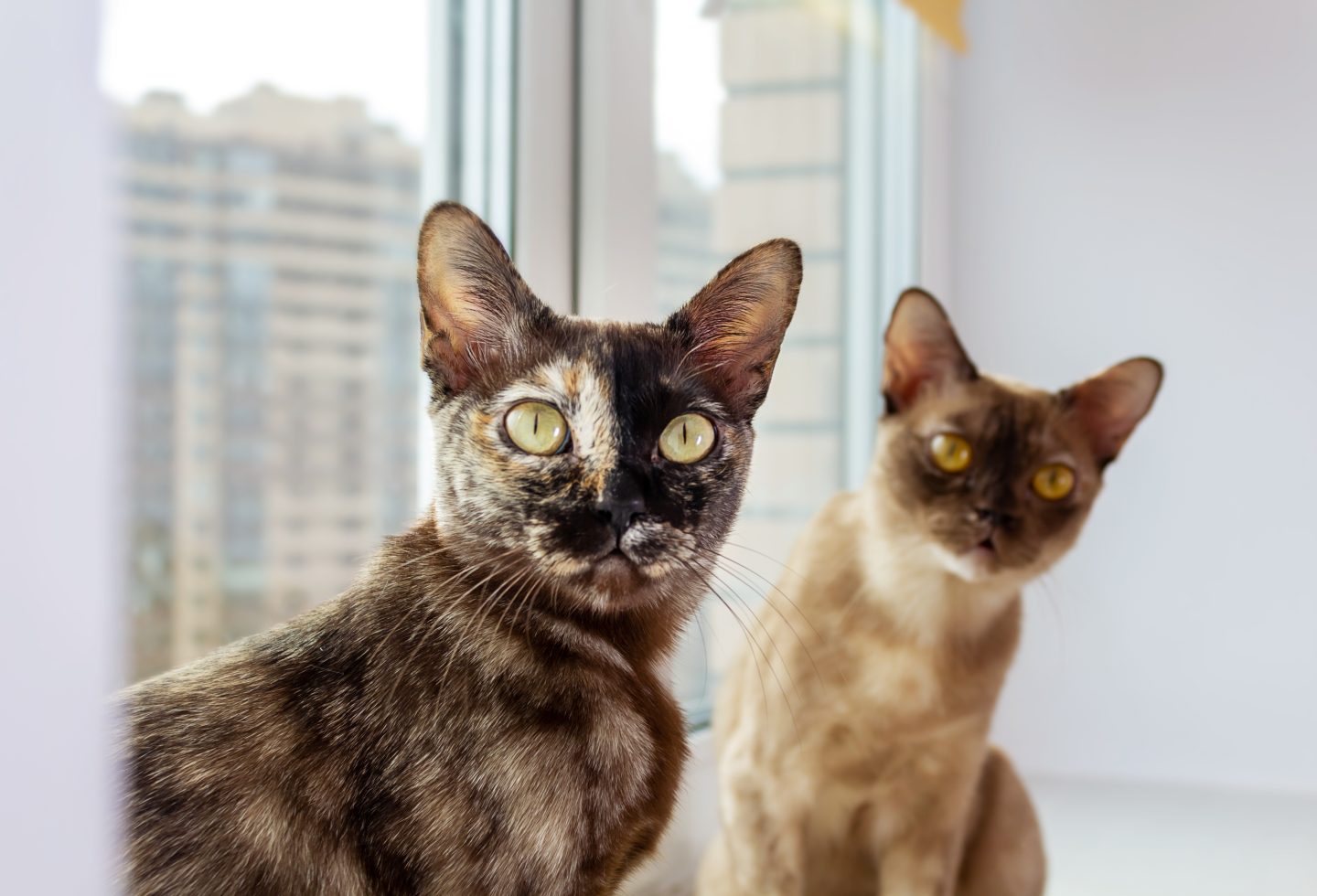
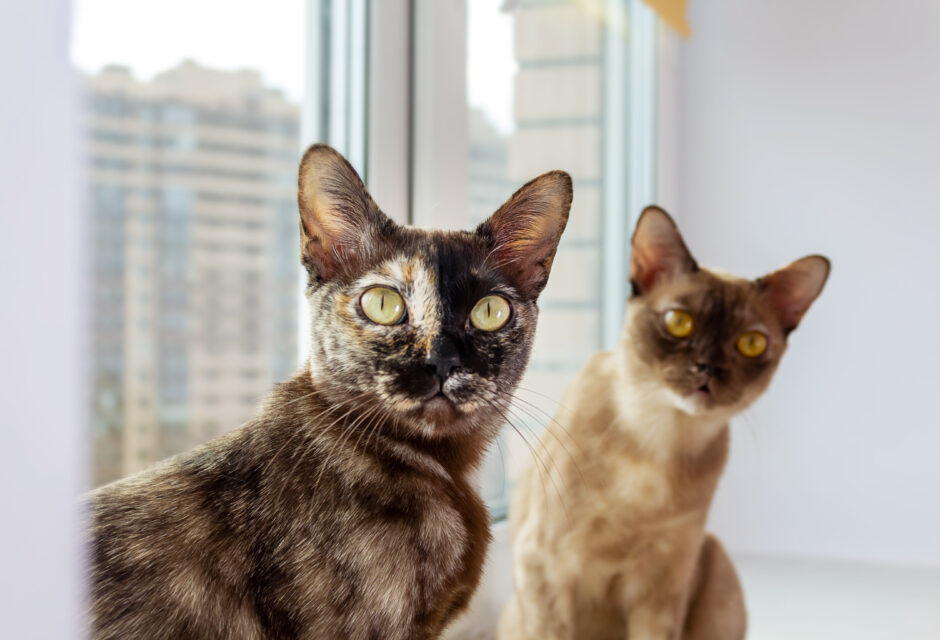
Sharing Isn’t Always a Good Thing in a Cat’s World
Do you have a multi-cat household? As a child, you were taught that sharing is a good and certainly a polite thing to do. If you’re a parent, you’ve undoubtedly tried to instill that in your own children. It’s always nice to share. If you have a multi-cat household, however, there are some situations where asking your pets to share may create stress and possibly lead to behaviour problems. So, at the risk of sounding terribly impolite, sharing isn’t always a good thing in a cat’s world. Here are a couple of examples.
The Feeding Station
In many multi-cat households, it’s not unusual to find a big bowl of dry cat food sitting in the kitchen for any member of the cat family to come and enjoy. While the cat parent may think having a big community food bowl makes everything convenient, it may create added stress. Although cats are social animals (I know that surprises many people), they aren’t social eaters. When the feeding station is only located in one area, it forces cats to eat in closer proximity to each other than they might normally prefer. This can lead to stress and might even create a situation where a more timid cat might wait until higher-ranking cats have eaten before attempting to approach the bowl.
Even with scheduled feeding, many cat parents place the food bowls all together in one room for cat family mealtime. One cat may nose another out of the bowl or might rush to finish his own food so he can push others out of their own bowls as soon as possible. Mealtime should be a time of total security and comfort in a multi-cat house.
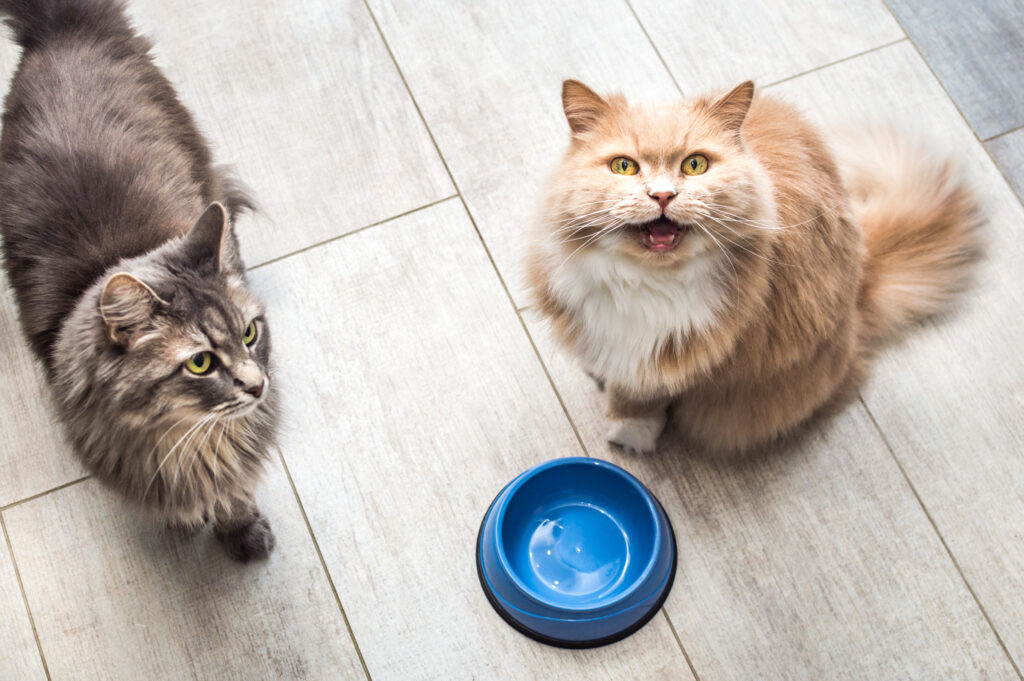
Photo: bigstock.com/anastas_
Every cat should have their own food bowl and the bowls should be placed at a distance that allows everyone to eat securely. In some cases, that may mean just separating the bowls farther apart in the same room, but in other cases, additional feeding stations need to be set up in other rooms. This is especially helpful if one or two cats are on a specific food formula but don’t feed your cat these foods.
Having individual food bowls is also important for verifying that each cat is eating the appropriate daily portion.
Whether you feed on a schedule or free-feed, make sure the feeding station doesn’t promote intimidation, tormenting, and stress. Even if your cats enjoy cozying up together on the sofa or will share one perch on the cat tree, it doesn’t mean they want to share at the feeding station. With a few adjustments, you may be able to reduce a great deal of stress that might be going on when it’s time to chow down in your multi-cat house.
The Litter Box
Cat parents may view the litter box as just a place a cat goes to eliminate, but for the cat, it’s a far more complicated relationship. Scent plays a huge role in a cat’s everyday life. When it comes to the litter box, cats typically only want to smell their own scents. Litter box avoidance may be created due to cats having to share a box, or because all the boxes are in one room. Cats who don’t have the best relationship may take exception with the scent of each other’s waste in the box. If there aren’t enough litter boxes, one cat may begin guarding the box to intimidate others from using it. Here are my 7 tips to the right litter box set up!
The general rule of thumb for a multi-cat house is to have the same number of litter boxes as you have cats, plus one extra for good measure. Now, here’s where the very important twist comes in. Those boxes should be scattered around the house so one cat doesn’t have to pass through another cat’s area in order to eliminate. If you have enough boxes and they’re located throughout the house, you decrease the chances that two opponents will end up having to use the same box (and most importantly, at the same time).
Although you can’t absolutely control which box a cat uses, the more choice you create by not forcing them to share, the more you increase the chances of maintaining a peaceful multi-cat house.
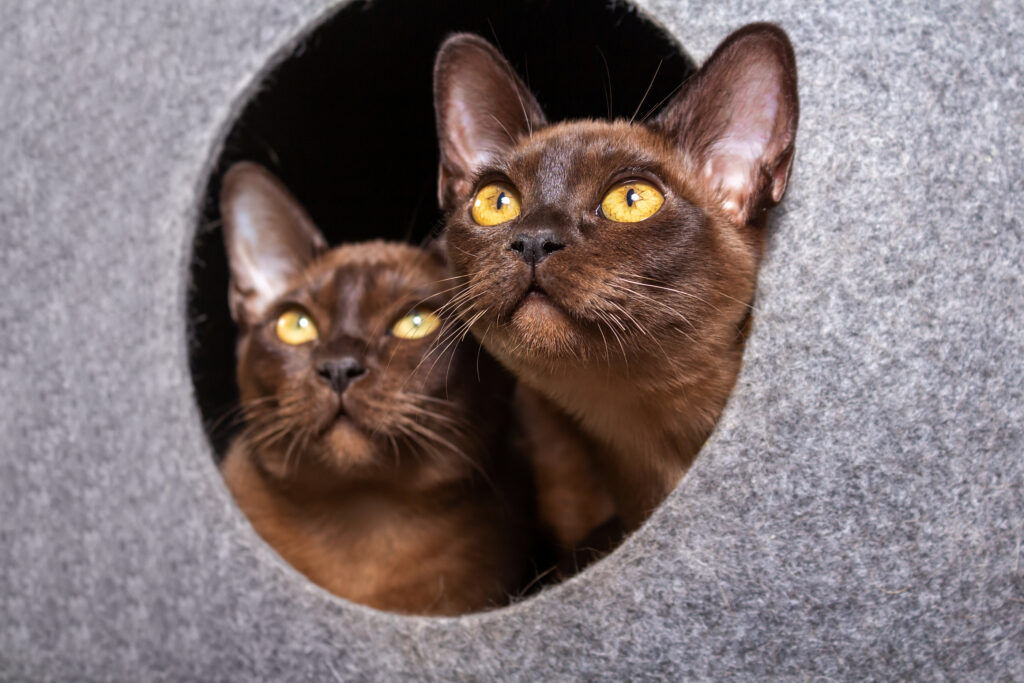
Photo: bigstock.com/Antibydni
Pam Johnson-Bennett
Certified Cat Behavior Consultant & Best-Selling Author
Pam Johnson-Bennett is a certified cat behavior consultant and best-selling author of 8 books on cat behavior. She starred in the Animal Planet series Psycho Kitty, seen in Canada and the UK. She was a vice president of the International Association of Animal Behavior Consultants and founded their cat division. She has served on an advisory board for the American Humane Association as well as other animal welfare organizations.
Pam is considered a pioneer in the field of cat behavior consulting, having started her career in 1982. Some of her books have been used as textbooks for behavior courses and she has influenced many practicing in the field today. Her book, Think Like a Cat, has been referred to as the cat bible.
Pam owns Cat Behavior Associates, located in Tennessee. She lives with her husband, two children, a rescued cat, and a rescued dog.
Join the newsletter and never miss out on cat content again!
"*" indicates required fields
By clicking the arrow, you agree to our web Terms of Use and Privacy & Cookie Policy. Easy unsubscribe links are provided in every email.






